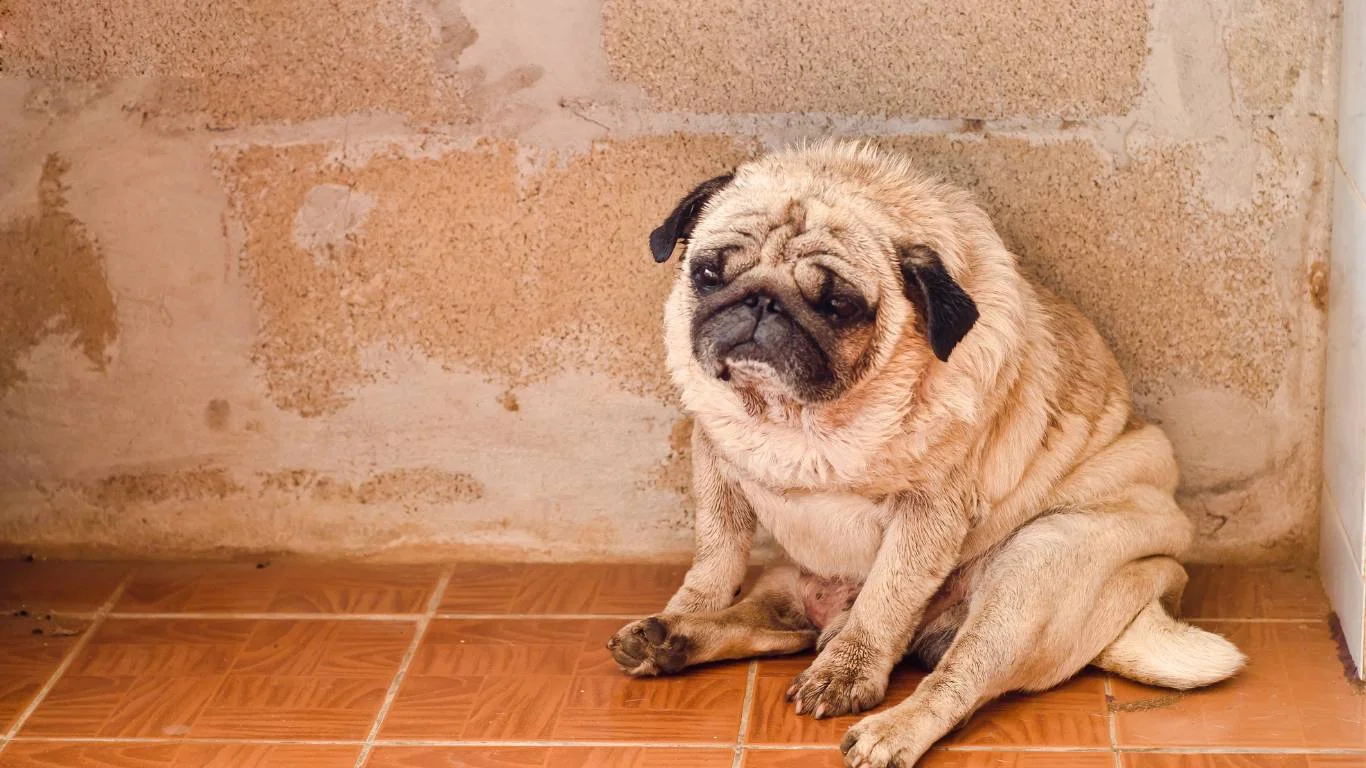Effective Ways to Treat Cracked Dog Nails at Home Safely
If you’ve ever winced after hearing that dreaded *click-pop* sound while your pup was playing a little too rough, you probably know the panic that sets in. Cracked dog nails can look worse than they are—but knowing how to treat cracked dog nails at home can save you and your furry friend a stressful (and costly) emergency vet trip. As someone who’s worked hands-on as a veterinary assistant with a focus on nutrition, I’ve seen my fair share of nail injuries—and trust me, a little knowledge goes a long way.
Understanding Why Dog Nails Crack (and How to Spot It)

Common Causes of Cracked Dog Nails
It might surprise you, but nails can crack for all sorts of reasons. Here’s what I usually see in the clinic and with my own dog at home:
- Overgrown nails: When nails get too long, they’re more likely to catch on carpets or pavement and snap.
- Nutritional deficiencies: Dogs lacking in biotin, zinc, or omega-3s often have brittle nails.
- Rough terrain: Frequent walks on hard or jagged surfaces can weaken the nail structure over time.
- Underlying health issues: Conditions like lupus or fungal infections can cause chronic nail cracking.
Sometimes, it’s just bad luck. One minute they’re leaping off the couch, and the next they’re holding up a paw with a torn nail. Ouch!
How to Identify a Cracked Nail
Not every limping dog has a nail issue, so here’s what to look for if you suspect one:
- Limping or favoring a paw—especially right after a run or a jump.
- Visible crack or split down the nail shaft. Some cracks run vertically, while others splinter off horizontally.
- Bleeding or a dark reddish stain around the nail bed.
- Constant licking or chewing at the paw—it’s their way of saying “Hey, this hurts!”
In my experience, dogs with cracked nails often act weirdly stoic. Even when it looks painful, they may just continue on like it’s no big deal. Always check closely if you see any of the above signs.
How to Treat Cracked Dog Nails at Home (Safely and Gently)

Step-by-Step Guide to Initial Treatment
So, you’ve spotted a cracked nail—what now? First, don’t panic. Grab your calm voice (the one you use during thunder storms), and follow these steps:
- Secure your dog: Gently restrain them if needed. I usually bribe mine with peanut butter on a lick mat. Works like a charm.
- Clean the area: Use warm water and a mild antiseptic solution. If the nail is bleeding, apply gentle pressure with a clean cloth.
- Clip only if safe: If part of the nail is hanging, you can trim it back with a sterilized dog nail clipper—only if you feel confident and the quick isn’t exposed.
- Stop the bleeding: A styptic powder or cornstarch pressed onto the nail tip works wonders. Keep applying pressure for a minute or two.
- Bandage if necessary: If the crack is deep or still bleeding, wrap the paw in vet wrap (not too tight!) and let your pup rest.
One time, my own dog managed to crack a nail while chasing squirrels through our gravel driveway. It bled like crazy, but once I cleaned it, clipped the jagged edge, and used some styptic powder, she was good as new by the next day. Patience and treats go a long way!
When to Call the Vet
Not all cracks are minor. You should reach out to your vet if:
- The nail is cracked all the way to the base or quick
- There’s pus or a bad odor (possible infection)
- Your dog seems in serious pain or won’t let you near the paw
Trust your gut. If something feels off, it probably is. I always tell pet parents: it’s better to ask than guess.
Preventing Nail Injuries Before They Start

Healthy Nails Start With Good Nutrition
Back when I was deep into the nutrition side of vet assisting, I learned how big of a role diet plays in nail health. Strong nails need the right nutrients. Here’s what I recommend:
- Biotin supplements: Helps improve keratin production.
- Omega-3 fatty acids: Keeps nails (and skin!) strong and flexible.
- High-protein diet: Nail tissue is protein-based, after all.
Adding a bit of salmon oil or a scoop of bone broth to your dog’s food can do wonders over time. Just be sure to chat with your vet before introducing anything new.
Proper Paw Care: A Long-Term Fix for Nail Health

Make Paw Checks a Weekly Habit
Okay, I know life gets busy—trust me, even working in vet clinics, I’d forget sometimes. But building a habit of weekly paw checks can seriously prevent a lot of nail drama down the line. You’re looking for cracks, overgrowth, swelling, or signs of pain. I usually make it part of my Sunday chill routine—dog on lap, coffee in hand, paw inspection mode on.
During these checks, gently press on each toe pad and feel the nail base. If your dog flinches or pulls back, take a closer look. Cracks often start small and can sneak up on you fast.
Keep Those Nails Trimmed—But Not Too Short
One of the most common causes of cracked dog nails I saw during my assistant days? Overgrown nails. If you hear a little “click-click” when your dog walks across the floor, it’s trimming time. Aim to trim just the curved tip, avoiding the quick (that pinkish area inside the nail). If you’re nervous, just do a little at a time—no shame in playing it safe.
Pro tip: use a grinder instead of clippers if your pup’s okay with the noise. It smooths out edges and makes future cracking less likely.
Homemade Remedies and Natural Support

DIY Paw Balms to Strengthen Nails
I’m a big fan of natural solutions when they actually work—and paw balms are one of them. You can make your own nail and paw balm with ingredients like:
- Beeswax
- Coconut oil
- Shea butter
- A few drops of lavender (optional, but calming!)
Melt these together, let it cool, and rub a bit on your dog’s paws after walks or nail trims. It helps moisturize the nail bed and prevent drying, which is often where cracking begins.
Supplements I Recommend for Nail Strength
Through trial and error (and lots of vet consults), these are some of the go-to supplements I’ve seen help pups with brittle or cracking nails:
- Biotin: Strengthens nails and promotes healthy keratin growth.
- Omega-3s (like fish oil): Keeps the nail bed hydrated and flexible.
- Vitamin E: Acts as an antioxidant, great for skin and nail tissue health.
Always check with your vet before adding supplements. What worked for my old lab mix might not be right for your energetic terrier. Everyone’s different—and so are their paws!
What Not to Do When Treating Cracked Nails

Don’t Yank or Pull at a Cracked Nail
It’s tempting—especially when there’s a sharp piece hanging—but pulling can cause way more pain and even bleeding. Always use clean, sterilized clippers and only trim if you’re sure you won’t hit the quick. If it looks too deep or if the nail is split near the base, let your vet handle it. I’ve seen even confident dog parents cause accidental trauma by trying to “fix it real quick.”
Avoid Skipping Follow-Up Care
Just because the bleeding stopped doesn’t mean the nail is done healing. Keep the area clean and dry, and monitor it for any signs of infection like swelling, discharge, or an unpleasant odor. I like using a breathable sock or bootie if my dog absolutely has to go out before the nail heals.
Don’t Ignore the Underlying Causes
If your dog keeps cracking nails regularly, it’s time to dig deeper. I had one pup patient who came in every few months with a new cracked nail—turns out she had an autoimmune condition that weakened her nail beds. Once we adjusted her diet and got her on a custom care plan, the cracks stopped completely.
Quick Emergency Kit for Nail Injuries
Every dog parent should have a mini nail injury kit at home. You don’t need much—just the basics. Here’s what I keep in mine:
- Styptic powder or cornstarch (for bleeding)
- Dog nail clippers or grinder
- Antiseptic wipes or spray
- Gauze and vet wrap
- Disposable gloves
- Treats (because they’ve earned it!)
I can’t tell you how many times this little kit has saved me from panic mode—especially when we’re traveling or out on a hike. It’s a simple way to stay prepared without lugging around a full pet first aid bag.
How to Handle Chronic or Recurrent Nail Issues

When It’s More Than Just a One-Time Thing
Alright, so if you’ve made it this far, you’re probably dealing with a dog who’s had more than one cracked nail—or maybe you’re just being the responsible, rockstar pet parent I know you are. Either way, let’s talk about what to do if nail problems become a pattern.
Back in the clinic, we had a sweet golden retriever named Benny who came in almost every other month with some kind of nail issue. His family was doing everything right—trims, good diet, paw balms, the works. After a few tests, we discovered he had a rare immune-mediated condition that weakened his nail beds. Once we knew what we were dealing with, the treatment plan became way more targeted—and the breakage stopped.
If your dog keeps cracking the same nail, or multiple nails seem brittle, it’s worth asking your vet to look into:
- Autoimmune diseases (like lupoid onychodystrophy)
- Fungal or bacterial infections
- Allergies that cause inflammation in the nail bed
- Underlying nutritional deficiencies
Tests Your Vet Might Recommend
Most cases of cracked nails don’t need fancy diagnostics—but chronic ones might. Your vet could suggest:
- Skin scrapings or nail biopsies
- Fungal cultures
- Blood tests to check for immune disorders or deficiencies
It may sound intense, but getting answers is the first step to relief—for both you and your dog. I’ve seen frustrated pet parents finally get a diagnosis after months of guessing, and the relief they feel? Unmatched.
Lifestyle Tips That Actually Make a Difference

Choose Softer Surfaces for Walks
Concrete jungle walks may look aesthetic for Instagram, but they’re tough on your pup’s paws. If your dog has a history of cracking nails, try mixing in grass trails or dirt paths whenever possible. These softer surfaces reduce impact and friction on the nails, helping prevent damage before it starts.
I started doing this with my older boxer, Bella, after she cracked a nail on our usual sidewalk loop. Switching to a wooded trail a few times a week made a huge difference in how strong and healthy her nails stayed.
Protective Gear for Active Dogs
If your pup is super active—think hiking, agility, or even just wild backyard zoomies—consider protective booties. I know, some dogs hate them (mine included at first!), but once they’re used to them, they can really help reduce nail trauma.
Look for breathable, flexible booties that don’t restrict movement but still offer some grip and padding. It’s not a daily thing for most pups, but for high-impact activities? Totally worth it.
Keep a Consistent Nail Care Routine
Like I mentioned earlier, keeping a consistent grooming schedule is everything. Set reminders on your phone, pair it with another habit (like your dog’s flea treatment), or even set up a standing date with your groomer if you’re not comfy doing trims yourself.
Consistency is key to preventing cracked dog nails from becoming a recurring problem.
Final Thoughts on Nail Health (From Someone Who’s Seen It All)
I’ve seen everything from minor splits to nails so cracked they exposed the quick—and every single time, it’s a learning moment. Whether your dog’s nails are strong as tree trunks or prone to snapping at the slightest wrong move, knowing how to treat cracked dog nails at home gives you confidence, and your dog comfort.
It doesn’t matter if you’re a seasoned dog owner or brand new to the pet parent game—these situations happen to all of us. Having the knowledge, a little patience, and a lot of love makes all the difference. And hey, if your dog walks away with a sock on their paw and a treat in their mouth, it’s a win.
References
- American Veterinary Medical Association
- American Gastroenterological Association (for nutrition references)
- PetMD
- Cornell University College of Veterinary Medicine
Disclaimer:
This content is for informational purposes only and should not be used as a substitute for professional veterinary advice, diagnosis, or treatment. Always consult with your veterinarian if you have concerns about your dog’s health.






